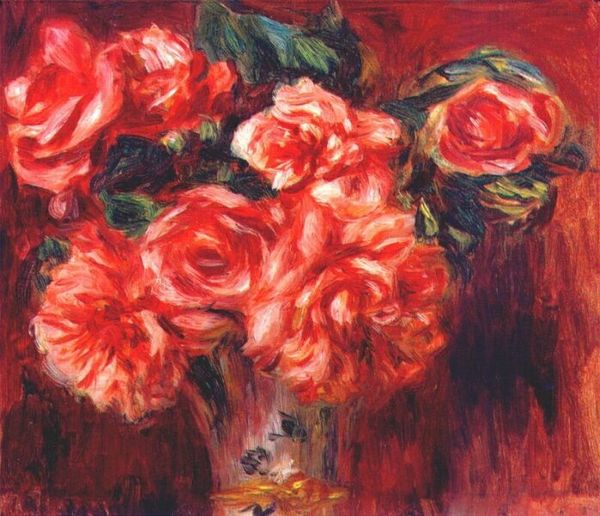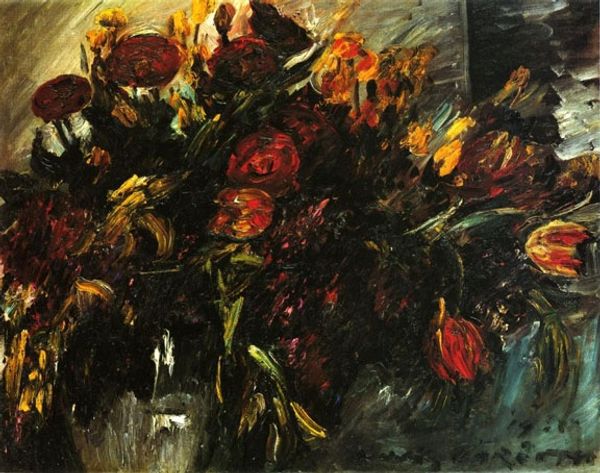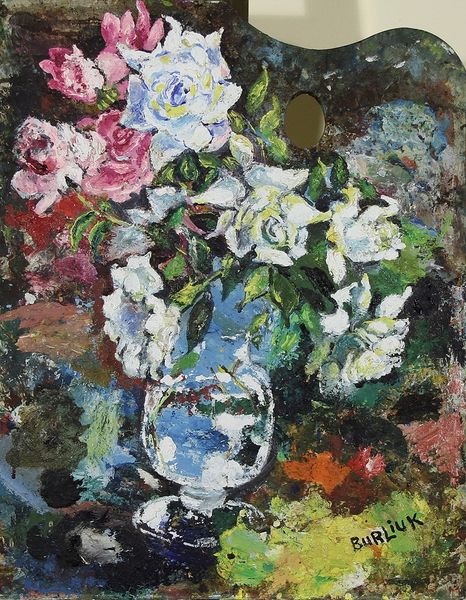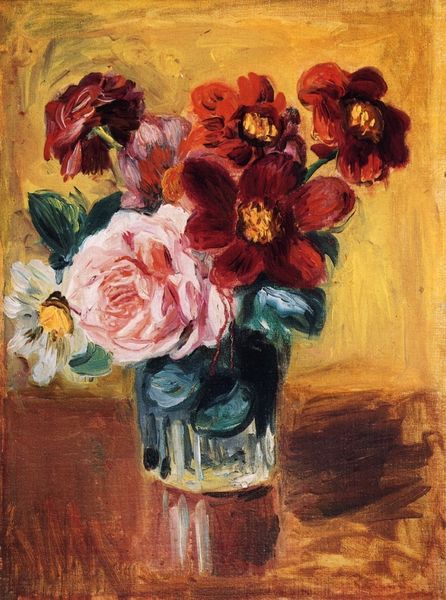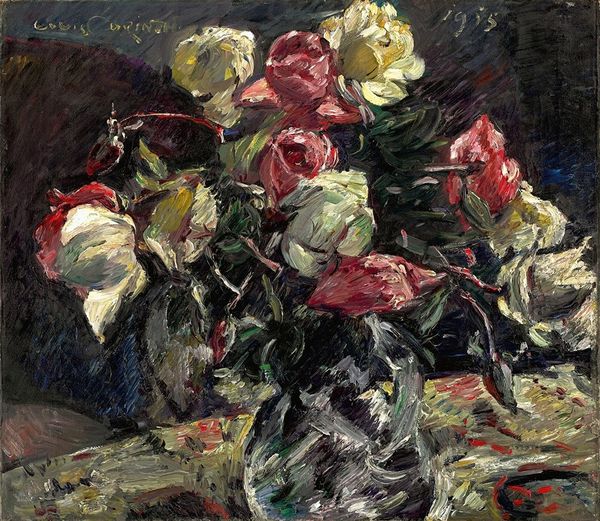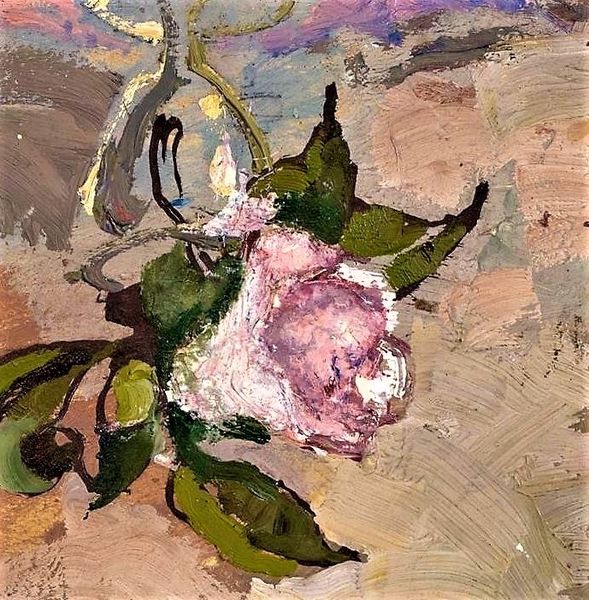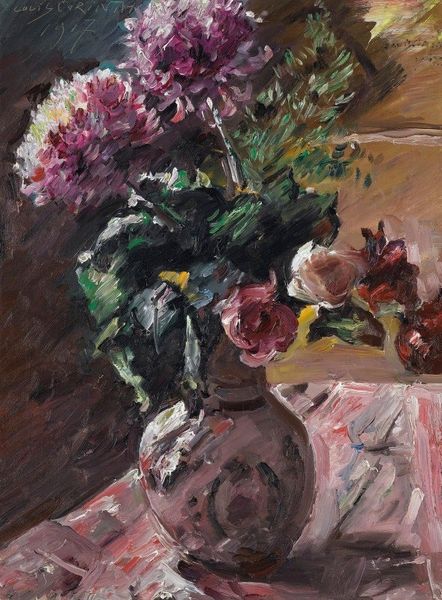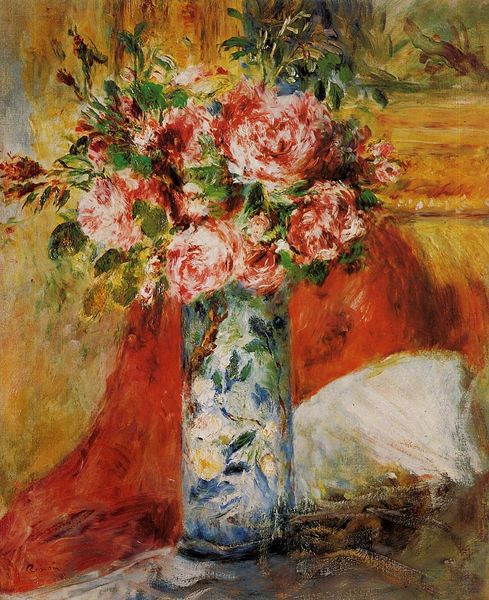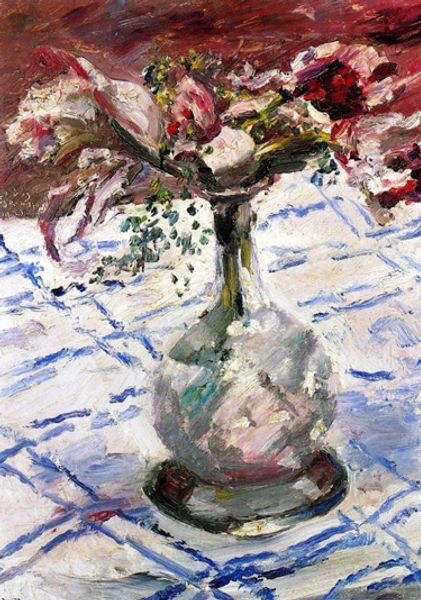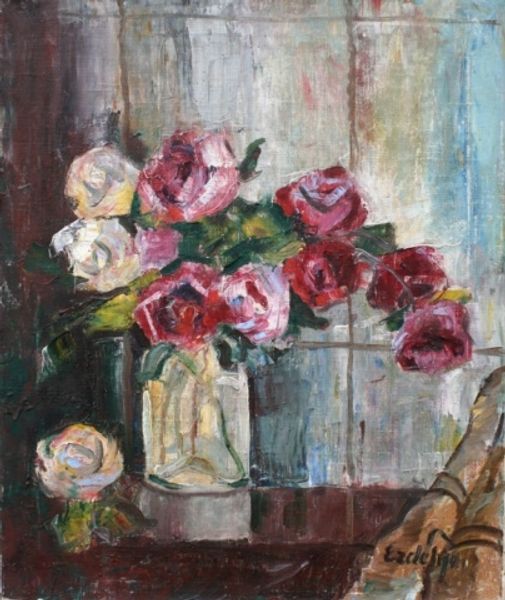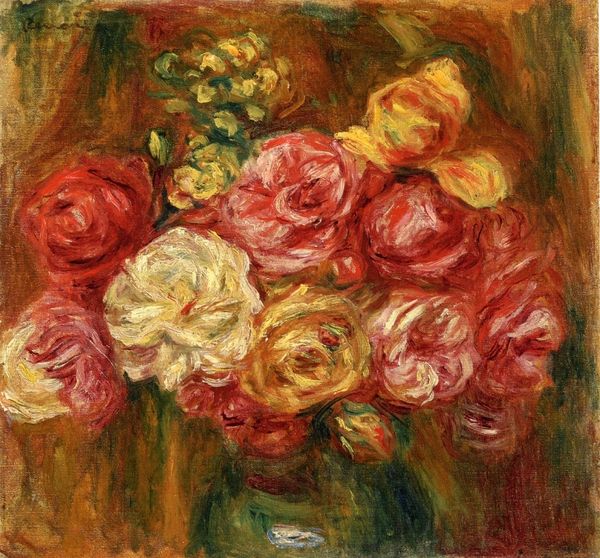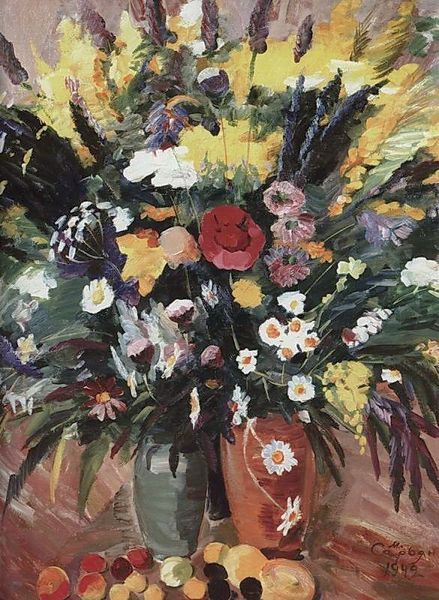
Copyright: Public domain
Editor: Here we have Lovis Corinth's "Pink Roses," painted in 1924 using oil on canvas. There's a real exuberance here. It almost feels chaotic with the brushstrokes, but in a captivating way. What strikes you when you look at it? Curator: It's fascinating to consider this painting within the context of Weimar Germany. Corinth, associated with German Expressionism, was grappling with personal and societal upheaval after World War I. The seemingly simple subject matter of roses, then, can be read as a defiant assertion of beauty and a kind of fragile hope amidst devastation. Consider the intense subjectivity characteristic of the Expressionist movement. Editor: Defiant! I hadn’t thought of it that way. I was just thinking about the colour palette! Curator: But consider that palette. That particular shade of pink would have carried cultural weight in the 1920s. Pink was shedding its association with solely feminine gentility, and becoming, in avant-garde circles, a more complex colour of modernity and even rebellion. This all depends, of course, on its reception within specific social circles. Are these roses simply a beautiful arrangement or are they representative of the everchanging modernity? Editor: So, the art world, its institutions and galleries, was at play to shape the meaning of art? Curator: Absolutely. The work gains currency depending on art market reception. Even Corinth’s declining health influenced critical discourse. The flowers, with their fleeting beauty, also speak to our human experience. Editor: It's amazing how one can unpack so many layers from such a simple subject! Now I see more than just pink. Curator: Indeed! Hopefully, you see Corinth using something visually pleasant to make a sociopolitical comment, and even represent Germany's sentiment, from that point in history.
Comments
No comments
Be the first to comment and join the conversation on the ultimate creative platform.

